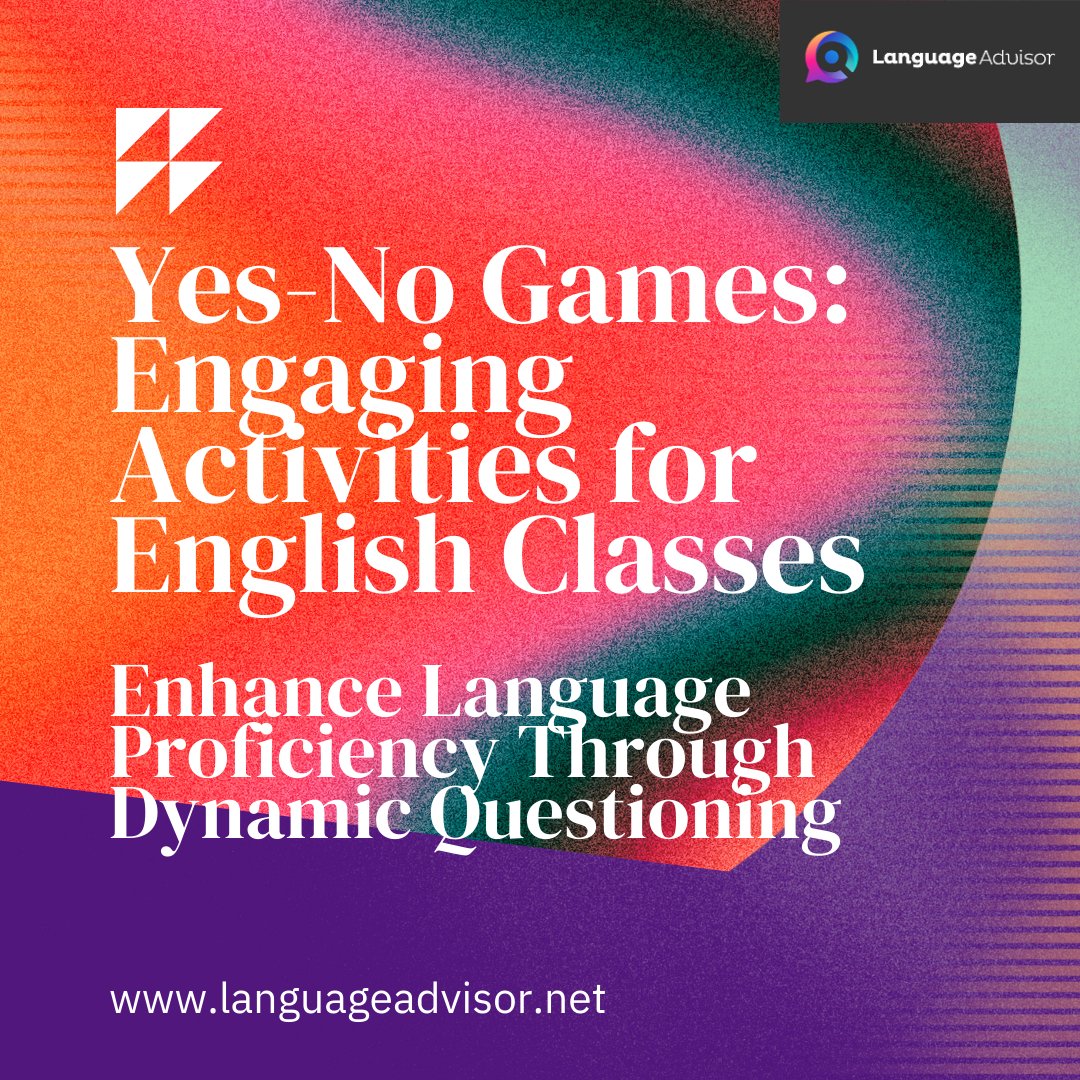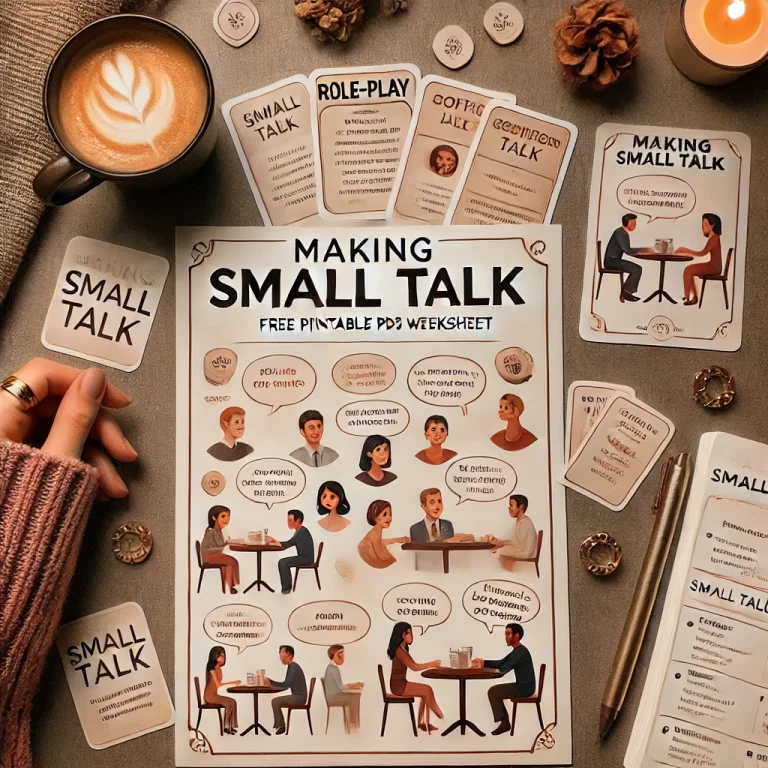Yes-No Games: Engaging Activities for English Classes. Enhance Language Proficiency Through Dynamic Questioning
Yes-No Games

Yes-No Games: Engaging Activities for English Classes
In the vibrant landscape of language learning, fostering interactive engagement is paramount. Yes-no games emerge as an invaluable tool, infusing dynamism into English classes while sharpening comprehension and communication skills. Through structured questioning and strategic thinking, students delve into a realm of linguistic exploration, where every response sparks dialogue and deepens understanding.
Join us as we explore a spectrum of yes-no games designed to ignite curiosity, cultivate critical thinking, and propel language proficiency to new heights.

Twenty Questions

In this yes/no question game, students guess the name of a famous person or character by asking the player 20 yes/no questions. This is an imaginative speaking activity for practicing different yes/no question forms and should prove useful.
Age/Level: Elementary and above
Time: 20 minutes
Players: Individual
Preparation: None
Aim: To guess the name of a famous person or character by asking yes/no questions
Procedure
- A player sits at the front of the class. Write the name of a famous person or character on a piece of paper and give it to the player. The other students take it in turns to ask yes/no questions to the player in order to find out his/her secret identity. A ‘yes‘ response from the player earns a questioner another chance to ask one more question.
- When a student correctly guesses the player’s identity, he or she becomes the next mystery person. Depending on the level of your students, you may need to print or write up some example questions.
Example questions:
- Are you male?
- Are you a real person?
- Are you an adult?
- Are you alive?
- Have you written a famous book?
- Do you play a sport?
- Are you an actor?
- Do you come from England?
- Do you work in Hollywood?
- Do you play a musical instrument?
- Are you Japanese?
- Have you been on TV?
- Are you a scientist?
- Are you a cartoon character?
Variation: Animal, Vegetable or Mineral For higher-level students, you may wish to play this variation. Instead of choosing a famous person or character, the player’s identity is an animal, vegetable or mineral.
This game is slightly different as the first question is always ‘Are you animal, vegetable or mineral?‘ This is the only question the students may ask, which does not require a yes or no answer. Apart from that, the game is the same. The type of questions the students ask will depend on the first answer.
Example questions:
- Can I eat you?
- Are you made of plastic?
- Are you heavy?
- Do you have fur?

Changing Chairs

This is an excellent ESL game for teaching a variety of yes/no question structures. It’s guaranteed to get your students’ attention.
Age/Level: Any
Time: 20 minutes
Players: Individual
Preparation: Question cards
Aim: To write and respond to yes/no questions
Before you play, write a set of incomplete questions, e.g. Are you…? Have you ever…? Do you like…? Can you…? etc. Make one copy of the incomplete questions for each student.
Procedure
- Give each student a copy of the incomplete questions.
- Tell the students to complete each question however they want, but they should try to make questions that require a ‘yes‘ answer.
- When everyone has finished, collect all the questions from the students and put them in a bag.
- Next, put the chairs in a circle.
- Explain that the students have to move chairs if they would answer ‘yes‘ to a question.
- Then read out the first question from the bag, and as the students move, grab a seat and remove it from the game.
- The student left standing is out of the game. Then, repeat with the next question and so on. The last player left is the winner.

Virus

This ESL game is great for teaching yes/no questions and short answers.
Age/Level: Any
Time: 10 minutes
Players: Individual
Preparation: None
Aim: To ask and answer yes/no questions
Procedure
- First, review the question and answer form that you want the students to ask. Tell all the students to close their eyes.
- Walk round the class and touch one student on the shoulder. That student has the virus. Now, ask the students to open their eyes.
- The students now go round the room asking questions, e.g. Can you…? The students must answer positively, e.g. Yes, I can.
- The student with the virus must answer negatively, e.g. No, I can’t.
- Any student who asks the student with the virus a question gets the virus and must also answer negatively, e.g. No, I can’t.
- The aim of the game is to avoid catching the virus.
- Play the game for ten minutes and see who has survived.

Yes No Laugh

This amusing ESL game is useful for teaching or revising yes/no questions and short answers.
Age/Level: Elementary and above
Time: 25 minutes
Players: Individual
Preparation: None
Aim: To ask and answer yes/no questions
Procedure
- Ask the students to write 10 to 15 yes/no questions. Tell the students that they will ask these questions to one another. When they have finished writing their questions, write the words, Yes, No, and Laugh on the board. Then cross them out.
- Make a scoreboard for the game. Draw a happy face for the ‘winners‘ and a sad face for the ‘losers‘. Seat the students in a horseshoe shape and put a chair in the middle facing the horseshoe.
- Explain that you are going to sit in the chair for one minute. During that time, the students ask you questions going from one end of the horseshoe to the other.
- The students’ job is to ask you questions that will make you use the words ‘yes‘, ‘no‘ or to make you laugh. Your job is to answer the questions without saying yes or no. Smiling is allowed, but not laughing!
Example:
- Student: Are you happy? Teacher: I am.
- Next student: Do you have a car? Teacher: I don’t.
- Next student: Do you like Vietnam? Teacher: Sure, I love it!
- Next student: Can you play football? Teacher: A little
- Next student: Can you say yes? Teacher: No. Ah!
The teacher has lost the game. He/She then writes his/her name under the sad face.
- In turn, each student sits in the chair and tries to survive for one minute without saying yes or no or laughing. If a player can survive one minute, write their name under the happy face.

Yes-No Games
In the realm of language education, yes-no games stand as stalwart allies in the quest for mastery. As we conclude our exploration, it’s evident that these interactive activities offer far more than mere amusement. They serve as conduits for linguistic development, fostering engagement, bolstering comprehension, and instilling confidence in learners. By integrating these games into your English classes, you not only enliven the learning experience but also empower students to navigate the complexities of language with fluency and finesse.
So, let the journey of linguistic discovery continue, guided by the power of yes and no
Yes-No Games
Yes-No Games. Also check out these activities to improve vocabulary












